Chris Hiatt knows he's had a good summer for honey when he can barely close his hands by the end of the season. At Hiatt Honey, his family's business, he regularly moves around hive boxes that weigh up to 70 pounds. "It is hard work, man," Hiatt, also the vice president of the American Honey Producers Association, said. "I drink two gallons of water every day because it's so physical. I love to do it. But it's not as fun as it used to be."
For the past two years, his hands have barely been sore at all. Bee populations across the country are declining for many reasons, like exposure to insecticide and fungicide, disease, and mites, ultimately causing colonies to collapse. From April 2018 to April 2019, beekeepers in the United States lost over 40 percent of their hives.
But there's another threat within the honey community that's intimately entwined with the lives of bees and their beekeepers, one that is largely unknown outside their world: honey fraud.
Grab any random bottle of honey from your kitchen, coffee shop, or restaurant: According to a number of honey experts who spoke with VICE, the odds are high that your honey isn't what it claims to be. Honey imported from overseas is often adulterated—either by having sugars added to it or by being cleaned, heated, or filtered—and then is blended with small amounts of true honey until the sticky substance is uniform.
In a small experiment of my own, I bought honey from different stores to test them at two different honey labs. In half of the samples I sent to a lab in Germany, and more than half of those I sent to a lab in Missouri, the results indicated adulteration may have taken place.
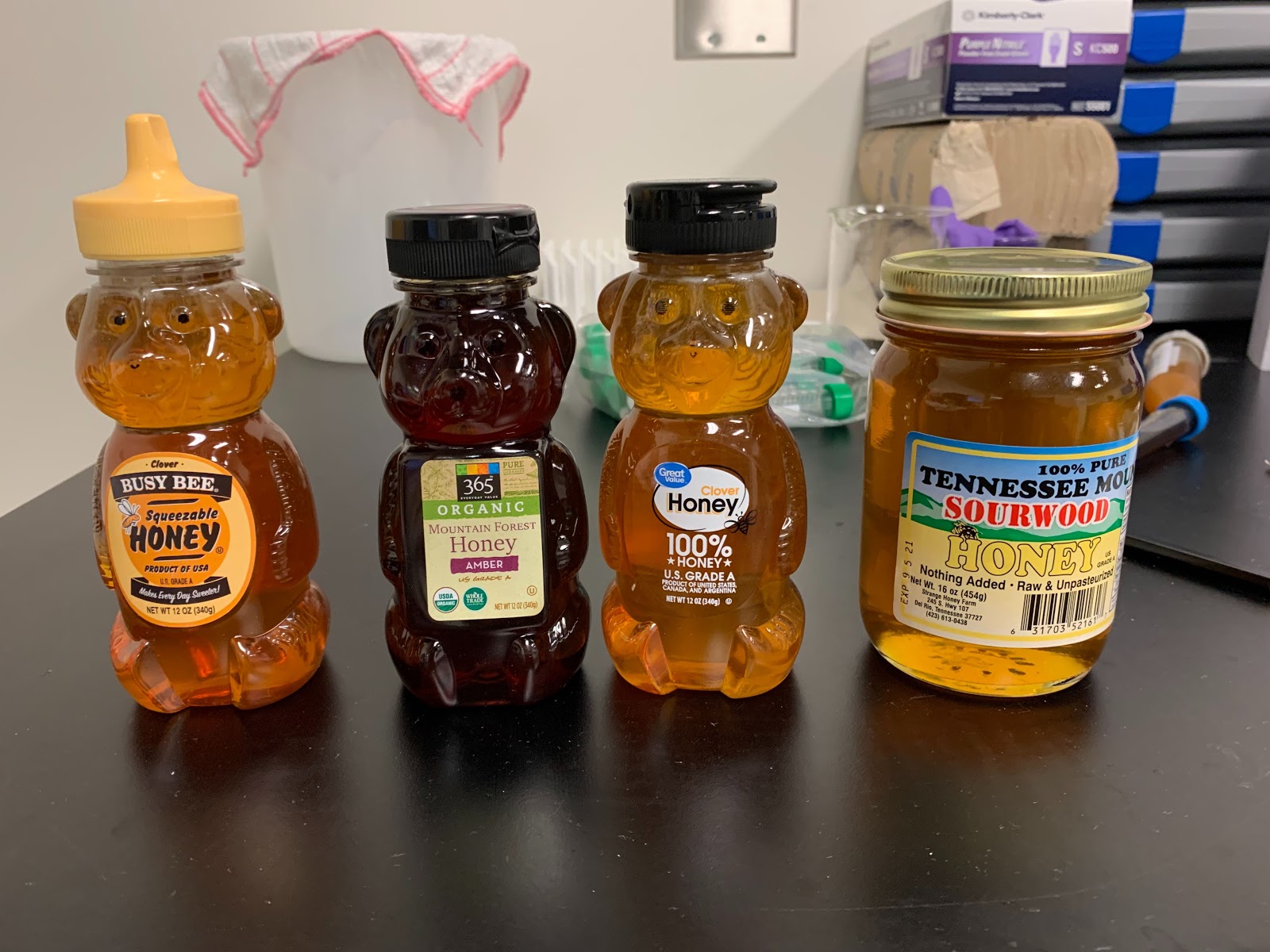
This isn't necessarily an issue of food safety; adulterated honey isn't typically dangerous to eat. But it does mean that customers are paying top dollar for "raw" or "local" honey with purported health benefits that could in fact be nothing more than a mix of different sugars. And perhaps more important than the possible defrauding of the consumer is the fact that according to experts, adulteration is driving global honey prices down, leaving beekeepers, like Hiatt, barely able to sell their honey for a profit.
It's a harsh irony, given that the consumption of honey has gone up by over 40 percent in the last 20 years—from around 400 million pounds to 575 million in 2018. Honey has been seized upon by the wellness empire as a good-for-you sugar replacement, filled with enzymes and pollen that can provide benefits for allergies, coughs, burns, or, as described in an interview with Goop, as an "all-natural energy source." With its growing reputation as a luxury item, the retail prices for honey are increasing, and honey is being used more frequently in other food products.
With the demand for honey soaring, you would expect the price of honey to be increasing along with it. Yet the opposite has occurred.
This paradox is a result of adulterated honey, which artificially increases the supply of honey, said Michael Roberts, executive director of the Resnick Center for Food Law and Policy at UCLA School of Law. “As long as adulterated imported honey floods the domestic market, US honey producers will find it very difficult to build a sustainable business model predicated on authentic honey," he wrote in a recent white paper on the topic, presented at 2019's World Honey Congress, Apimondia, in Montreal.
“These battles that are being fought are battles of survival, quite frankly,” Roberts said in an interview.
Adulteration is driving global honey prices down, leaving beekeepers barely able to sell their honey for a profit.
As beekeepers encounter growing environmental struggles to keep their bees alive, one of the major ways they make money—selling honey—is no longer supporting them. Bees do more than just make honey; they perform a vital role in pollinating the food we eat. Usually, beekeepers split their time between pollination and honey producing. With honey prices so low, they're having to focus more of their energies on pollination, which puts bees at higher risk—they have to travel more, be exposed to other colonies and potentially new diseases, and eat largely the same foods, all which negatively impacts their health.
In dozens of conversations, beekeepers, honey importers, and honey packers (those who put honey into bottles) shared how precarious the situation is. They said that many honey importers and packers know that the honey they're buying is adulterated, because the prices are much too low. They said that the testing methods for honey are outdated, if they're being used at all, and that honey certification organizations exist only in name, but not in practice. Many wouldn't speak openly about these topics for fear of retribution—for fear of not being able to buy or sell honey after calling out the wrong person or company, and of being exiled from an already difficult market to make a profit in.
“These battles that are being fought are battles of survival."
But in a series of lawsuits filed over the last year, honey adulteration is finally being brought out of the shadows. Lawyers are finding consumers who have allegedly bought adulterated honey at their local grocery stores, and having the honey laboratory tested for proof. The accused in their complaints include major brands, and one of the dominant honey certification groups: True Source Honey, an organization that is supposed to guarantee where honey is sourced from so as to guarantee its quality.
"In my opinion, they've all been doing this for years," Kent Heitzinger, one of the lawyers said. "That's my gut feeling. And it's all about profits."
Watch more from VICE:
Honey can deceive in many ways. Some honeys are heated to high temperatures, for easier manipulation and to avoid crystallization, but are presented as raw. Others are diluted with different kinds of sugar or syrups, made from rice, beet, corn, or other plants. Honey can be extracted while it’s still immature (when it's not yet honey, but a nectar product), or labeled as local when instead it comes from overseas.
Honey can also be filtered through something called aliphatic resin—a washing machine for honey that would be unpalatable to sell to most Western markets. This resin technology removes contaminants from food, and when it's used on honey, it can obscure where honey came from and also remove particles adulterators don’t want others to know were there, like antibiotics, pesticides, or unwanted flavors.
Take Indian gum honey, for example: "Tastes and smells like old gym socks," said Jim Gawenis, a biochemist and the owner of Sweetwater Science, an independent food-authenticity laboratory with International Organization for Standardization (ISO) accreditation. "You can’t sell it because nobody wants it. Well, dissolve it in water, run it through this, now you’ve gone three shades lighter into an amber. You get rid of the malodors, and now you have a sellable honey.” (Sweetwater is one of the labs where I did my testing, as well as the lab that plaintiffs’ lawyers are using to collect evidence for their suits.)
Resin technology also removes any enzymes or chemicals that many honey consumers desire—the same that supposedly have all those health benefits.
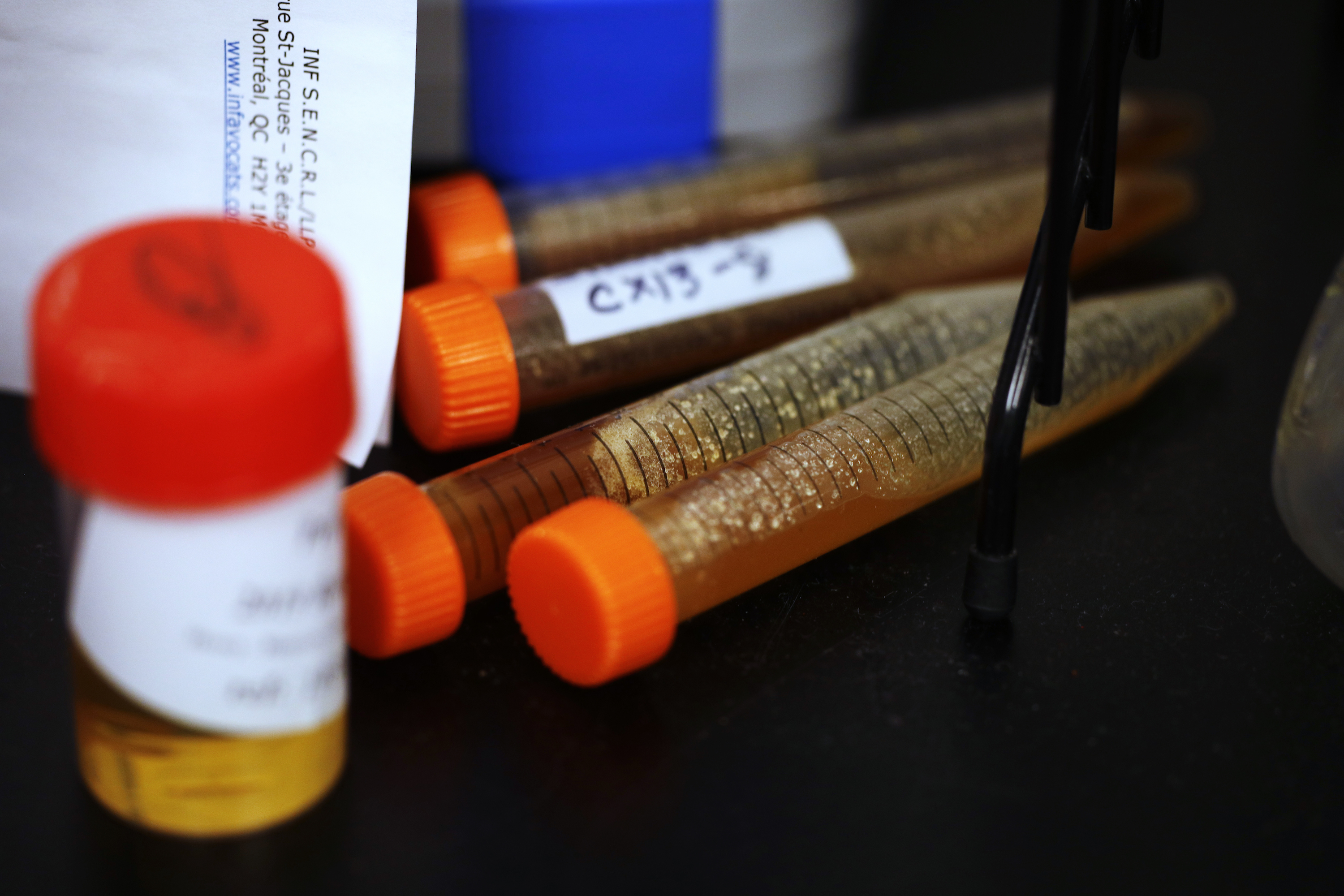
Other forms of adulteration can obscure where honey comes from, like ultra-filtration. “What they do is they would take, say, a Chinese honey, put it through that filtration, and then dust it with Argentine pollen, mix it up,” Gawenis explained. “All of a sudden, you have Argentinian honey.”
According to Roberts, the threat to pollination and our food systems and the threat to the economic survival of the honey producers from honey fraud are intimately connected. In the United States, bees help produce 90 commercially-grown crops and push more than $24 billion into the United States economy, according to a White House press release from 2014. The honey producers in the United States are in “a state of crisis,” Roberts wrote in his white paper, “even while the popularity and demand for honey products soars."
In 2008, the European Parliament recognized the symbiotic relationship between a beekeeper, their ability to make money from honey, and their ability to manage honey bees as pollinators. “The White House, the USDA, the EPA have all recognized the threat to pollination, yet they didn't make the connection to the honey producer and the economic fraud,” Roberts said.
Instead, the USDA, under the Trump administration, said that it stopped collecting data for the Honey Bee Colonies survey for budgetary reasons, only a few weeks after scientists found that almost half of bee colonies were lost in the previous winter.
“Adulteration will cause American food production to falter,” Gawenis said.
The drama surrounding fraudulent honey has come to a head in the a series of class action lawsuits filed over the past year, in which major honey brands and packers have been accused of adulterating and misrepresenting honey. Kent Heitzinger is a lawyer based in Chicago whose litigious world revolved around commercial litigation—until two years ago.
His partner, Terry Bueller, an expert in class action lawsuits, became interested in investigating honey, a food he had heard was often fraudulent. Bueller asked Heitzinger for his help, and that choice to say yes plunged Heitzinger head-first into the world of honey fraud.
“We tested about 60 to 70 different companies, and we found that about 50 to 60 percent of those honeys tested are bad honey," Heitzinger said. "Out of 110 products, around 70 percent were adulterated. There’s been something done to them. It is just pure fraud in our opinion. They're selling products to the American public that isn't what it says it is.”
One group named more than once in their suits is True Source Honey, the honey certification organization. True Source was founded in 2010 in response to the influx of Chinese honey on the American market, even after the US government imposed tariffs on Chinese honey imports.
"This circumvented and mislabeled honey was being shipped into the United States at well below world market price, undercutting fair market pricing," said True Source's executive director, Gordon Marks. "Thus the need for an origin-based certification body to certify that the declared country of origin is in fact true."
“Adulteration will cause American food production to falter."
True Source is a voluntary program with more than 600 members, and Marks said that there are annual audits on True Source members when they go onto sites unannounced and inspect them, look at their records, and pull random samples.
Marks said that their certification doesn't address quality factors in honey, just tracks where it comes from. Yet, according to their website, True Source certification monitors where honey comes from to ensure that honey doesn't come from countries that manipulate their honey. "Other honey is found to contain added syrups or sweetener extenders that are not made by bees in the hive," its website states. "As with any food, when you're not sure of the origin, you can't be sure of the quality. True Source Certification ensures that honey is truthfully labeled as to its origin, that there is a transparent record of the honey's sources, back to the hive. Honey has earned a special place in people's hearts and minds as a wholesome, natural food."
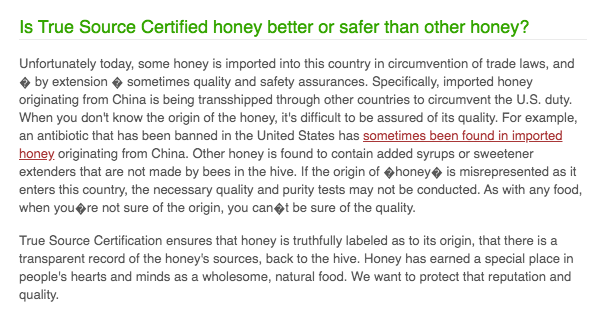
Several beekeepers and packers, who didn't want to be named for fear of professional retribution, told me that True Source hasn't been as thorough as they claim to be, and has instead become a shield behind which nefarious players can import adulterated honey without reprimand.
"Sophisticated and large scale adulteration has thus been able to make a mockery of the honey industry’s feigned attempt at 'self-policing' through True Source," said one honey importer and packer, who requested anonymity over fears of professional retribution.
Heitzinger said the actual number of bad actors operating under the True Source umbrella is unknown, but that he's tested many True Source-certified products and found evidence of adulteration. One honey they tested was so fermented from all the excess water added to dilute it "that in my opinion, you couldn't sell this to a minor because there's so much alcohol it would be illegal," Heitzinger said.
(In response, Marks said that "It has been our experience that any finding at a single laboratory should be verified by a second qualified laboratory.")
A lawsuit filed by Heitzinger and Bueller in August 2019 named a product from Barkman Honey, one of the largest honey packers in North America. The honey is called "Naked Wild Great Lakes Raw Honey" and is True Source certified. On its website, it's described as “Raw and Unfiltered” and as “100% Pure Raw Honey” on its label. Testing by Heitzinger suggested that it had been heated to higher than 105 degrees. The complaint states that if True Source did the kinds of rigorous monitoring they say they do, they would have discovered these issues themselves. “That it did not is evident that the True Source certification is false.”
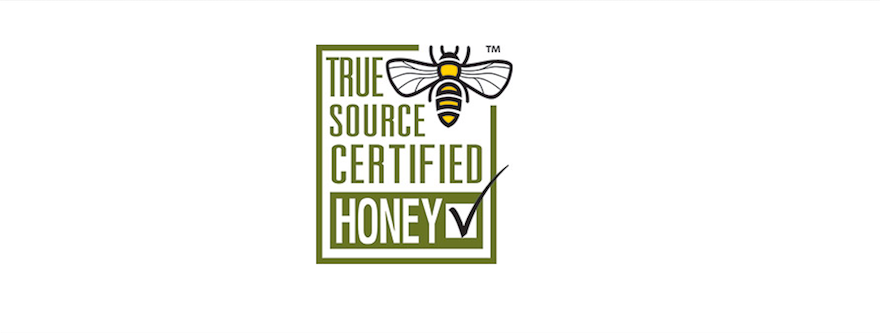
Another suit, filed by Heitzinger and Bueller in February against Texas honey company Nature Nate’s, alleged that its "100% RAW HONEY" had been heated, and that the samples showed that other sugar syrups had been added to the honey. A complaint filed by Heitzinger and Bueller in September against Kroger alleged that honey labeled as “Private Selection Raw and Unfiltered Wildflower Honey” or “Simple Truth Organic Raw and Unfiltered Honey” had been heated.
In December, a complaint was filed against Strange Honey farm, owned by Gary and Fonda Strange, alleging that its raw local honey is not from Tennessee, as it advertises on its bottle and website. The lawyer's lab testing found that the "local" honey from Tennessee came from Vietnam. "Moreover, it is not 100 percent honey," Heitzinger and Bueller wrote in the suit. "Syrup has been added to the honey, because syrup is much cheaper—about one tenth the price of pure honey."
A messy legal battle is now in full swing. Heitzinger said they have many more suits forthcoming against other honey brands and packers. In response to the existing suits, Barkman, Nature Nate's, Kroger, Strange Honey Farms, and True Source Honey have filed motions to dismiss the claims, disputing the accusations of heating and added sugars made by Heitzinger and Bueller. True Source, in its motion, wrote that since the program is designed to ensure that the honey was legally imported into the U.S., its certification isn't misleading when it comes to adulteration.
In January, a dismissal against True Source in the "Naked Wild Great Lakes Raw Honey" was granted by a judge because of a jurisdiction issue—the suit was filed in Kansas, and True Source is based in D.C. The judge also dismissed the claims against Barkman for negligence, violating the Kansas Consumer Protection Act, and fraudulent concealment. But the fraudulent misrepresentation claim—the allegation that the honey was heated—is still active, and the case has moved on to discovery. Bueller and Heitzinger can now request records from Barkman honey, and they said that new suits against True Source, in the proper jurisdiction, are forthcoming.
Nature Nate's said that it stands by the integrity of their products. "We believe that this lawsuit is unwarranted and unfounded, and we will vigorously defend ourselves," its director of marketing said.
Barkman Honey and Kroger did not respond to requests for comment by the time of publication. (In its motion to dismiss, Nature Nate’s said that it discloses that its honey is “gently warmed” and claimed that it has no knowledge of there being honey in its syrup. Kroger claimed in its motion to dismiss that tests of random samples prove nothing about what is generally true of their honey, that elevated HMF levels could be caused by factors other than heating, that, and that there is no consensus about what the term “raw” means.)
"It is just pure fraud in our opinion. They're selling products to the American public that isn't what it says it is.”
When asked to respond to the claims made in the lawsuits, Marks, from True Source, and Gary Strange, from Strange Honey Farms, both told VICE that they will be defending themselves against the allegations, and declined to comment further since cases were in process.
In February, Strange Honey Farm filed a motion to dismiss alleging that the plaintiffs failed to comply with federal class action rules. As a result, the plaintiffs voluntarily dismissed the case but have said they plan to refile.
Carol Hagen, the Nashville distributor for Strange Honey Farm, sent out a press release a week after the case was dismissed. In the subject line, it indicated that small businesses should be warned of suits like this one and that the suit was under investigation by the Illinois Bar Association.
But when I called the Illinois Bar Association for comment, the senior manager of marketing and communications, Rhys Saunders, said that wasn't the kind of thing their organization does. "We do not look into these kinds of matters," Saunders said. "The IBA has no statutory or regulatory role relating to the registration or discipline of attorneys in Illinois." According to the Attorney Registration and Disciplinary Commission (ARDC) of the Supreme Court of Illinois, which does handle these complaints, Heitzinger does not have any public record of discipline or pending proceedings.
In response to an email for comment, Hagen told me, "We are proud of our raw natural honey. I invite you to do some good old fashion shoe-leather reporting based on independent research. Please take the time to pursue the truth."
In early January, in an attempt to "pursue the truth," I brought four bottles of honey to test in Gawenis's lab in Missouri.
As adulteration floods the honey market, the methods for testing for this adulteration are evolving. A little over 20 years ago, a method was developed for detecting other types of sugar added to dilute honey by looking at the types of sugars found in it. C4 sugars are made from plants like corn and wheat, whereas C3 sugars come from flowering plants, the kinds that bees normally go to. When testing honey, you would expect to find C3 sugars; if you saw C4, it meant other sugars had been added to it. But in the past decade, adulterators figured out how to create C3 sugars out of plants like rice.
“Guess what?” Gawenis said. “Now you can't see that in the C4 test. So while it's still a good method, they've worked a way around it."
In response, some laboratories have started to look at pollen to determine a honey's country of origin, but Gawenis said that adulterators can also simply add pollen to their stock, and trick the test.
In the past five years, another technology has stepped up to bat: nuclear magnetic resonance imaging (NMR). NMR isn't new, but its application to honey is. The NMR food screener, made by scientific instrument producer Bruker, can analyze the the magnetic fields of the atoms in any substance. When you image honey with NMR, it creates a spectrum that acts like a fingerprint, and can test for at least 36 different components of honey. NMR can also identify the country it came from using that molecular fingerprint by comparing it to a growing database of more than 18,000 honey samples established by the Honey Profiling Consortium, a collaboration of all the labs that use this specific technology on honey.
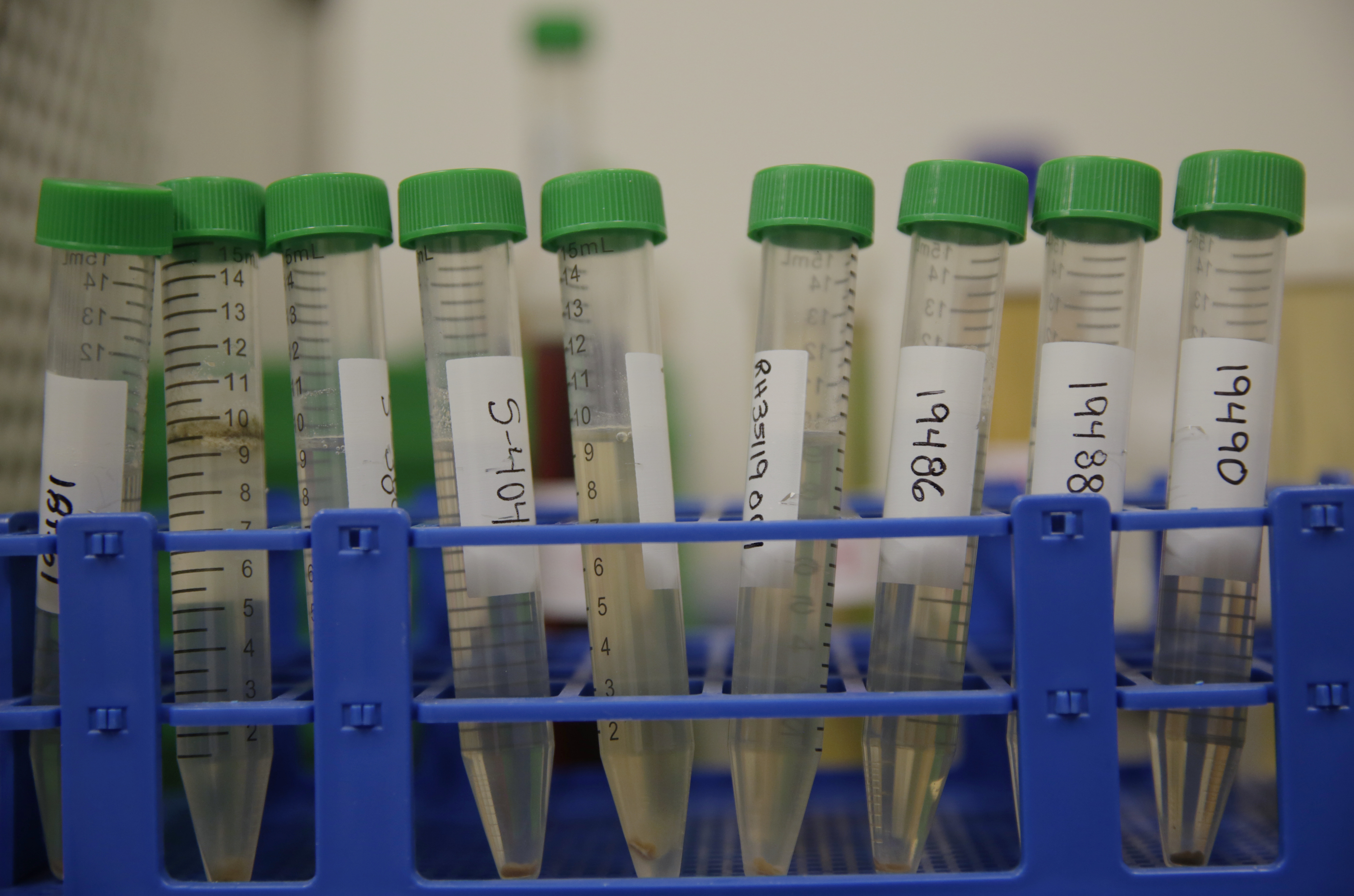
Arne Dubecke works in research and development at the ISO-accredited food testing laboratory, Quality Services International, in Bremen, Germany. The lab was founded in 1954 as the Institute for Honey Research, and though they now test other foods and drugs beside honey, they have extensive experience on determining the quality and veracity of honey samples.
Dubecke said while we shouldn't eradicate older methods for testing honey, NMR is "basically the most comprehensive screening method right now." He explained that if a lab is doing honey screening, they're likely using the machine made by Bruker. This is a good thing—it means each person is using the same methods, preparations, settings, and analysis for the samples. "A harmonization of methods is usually not easy," Dubecke said. "And in this case I don't really know any other method that is better harmonized than that one."
But the total number of people doing NMR testing on honey is small—so small, in fact, that Gawenis's lab at Sweetwater Science in Columbia, MO is the only lab facility in the United States currently using the technology.
To Sweetwater, I brought one honey from Whole Foods in Brooklyn, its 365 brand Organic Mountain Forest Honey; another from a deli in Manhattan, the Busy Bee brand; one from a Walmart in Columbia, the Great Value Clover Honey; and a fourth ordered from Strange Farms (the honey named in the lawsuit that Heitzinger filed in December). The Busy Bee honey is distributed by Barkman Honey, and is True Source certified, as is Walmart's Clover Honey.
The honey from Whole Foods is one that I would reach for if I had honey on my grocery list that day. The other two I wanted to buy from your average grocery store, like Walmart or a small bodega; I selected ones that weren't super high-end but still made claims of being pure honey on their labels. Two of my bear-shaped bottles had True Source certifications.
A few months ago, if you had asked me to select which of these honeys I thought was the most authentic, I probably would have picked the Strange Farms one. It didn't come in a bear-shaped bottle, and the label said it was local, raw, unpasteurized, and had nothing added to it. But I would have been wrong.
Gawenis and his wife, Laura, got into food authenticity after a relative was diagnosed with celiac disease. As scientists, they started to poke around legitimate ways to measure the contents of food. There was a NMR machine at the University of Missouri—exactly the right kind for screening food. Gawenis now collaborates with the university and their students, while running Sweetwater Science as a business.
As an independent and ISO accredited lab, Sweetwater Science is up for hire by anyone who wants to test honey—beekeepers, consumers, packers, and lawyers like Heitzinger. Even people off the street who want their honey tested can bring them their samples, which happens more than you might think. Gawenis is a scientist—he doesn't sell honey or import it. He doesn't even certify the honey he tests as good or bad, either; he analyzes it with Bruker's NMR food screener, and provides the data to his clients. From there, they can do what they like with the information.
“When Laura and I started this, we knew we were getting into a relatively dark world,” Gawenis said. “We had no idea how dark a world. I'm just finding so much stuff."
When I visited, there was honey everywhere in the lab—in boxes, either coming in or being shipped back to clients, on the lab benches, or stacked on shelves surrounding the lab. As Gawenis opened each bottle I brought him, his senses started to kick in. Smell comes first; the bottle he’s holding is supposed to be a clover honey. “It doesn’t smell like clover honey,” he said. “I’m not a sommelier by any stretch of the imagination, but, just based on experience, what clover is supposed to smell like ... It's just, it's not right.”
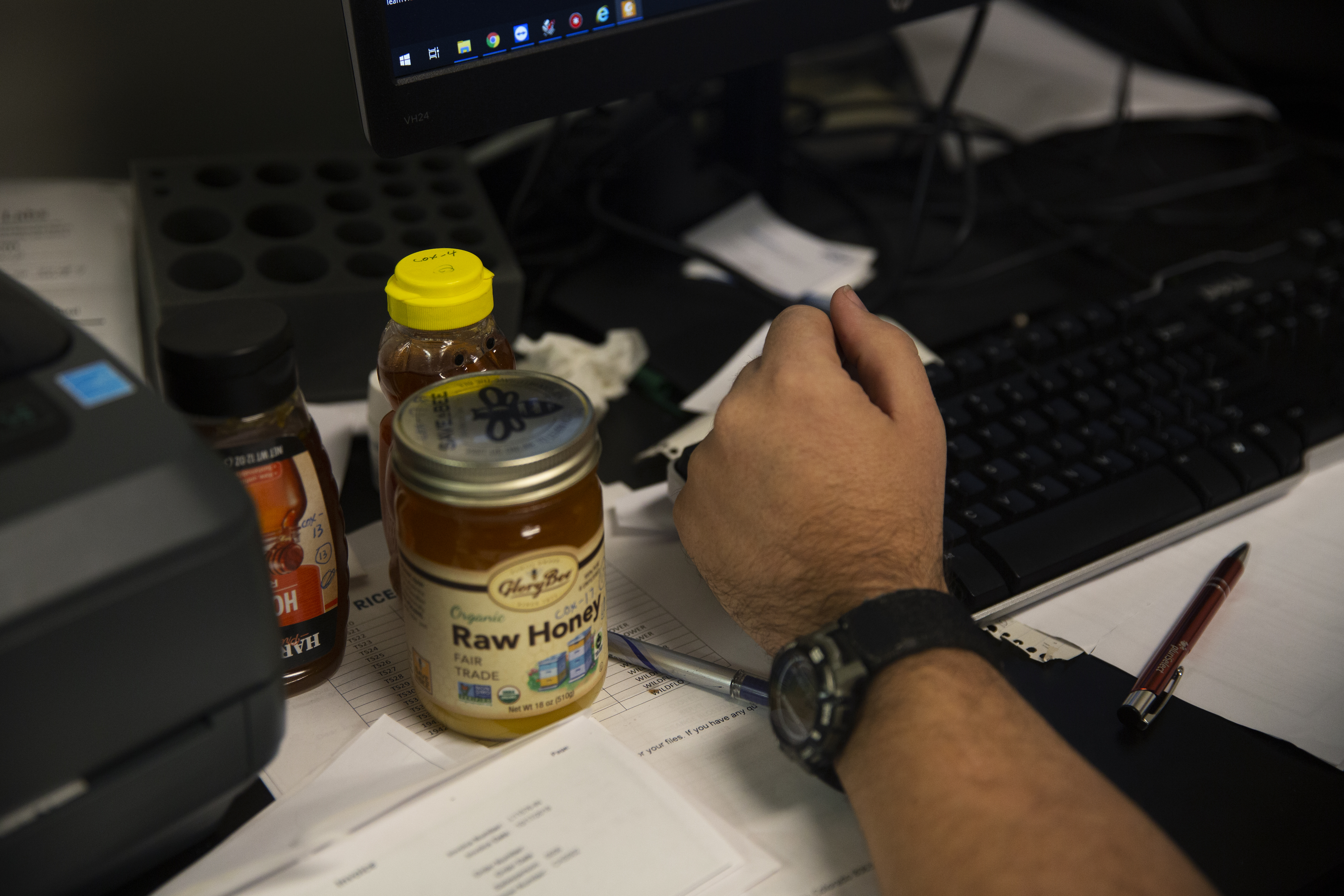
“You notice the viscosity on that one?” he asked me. He sticks a stirring spoon into the Strange Farms honey and it meets little resistance, swirling easily in the jar instead of being roadblocked by sticky thickness.
“Much thinner,” he noted.
Gawenis passed it to me to smell. I could hardly smell anything—just the faint odor of sweetness, but nothing like raw honey should smell like, Gawenis told me.
The testing process was simple and standardized. First, Gawenis mixed the honey with pure water, and put it into a centrifuge to separate out the solids. Then he made all the honey the same pH level, to be able to accurately compare the samples to one another. Finally, we brought the samples downstairs to the NMR machine.
Packers importing from other countries may or may not be doing the same testing on their products, but no one is requiring them to do so. “You do have some companies who are actually concerned about the actual real quality of what it is they're producing," he said.
Gawenis said that barely any of the honey containers that come through our ports are tested. Since he is the only NMR testing facility for honey in the United States, he can crunch the numbers: He’s testing less than 1 percent of honey in the country—meaning 99 percent is being sold without NMR testing, as far as he knows.
"We knew we were getting into a relatively dark world. We had no idea how dark a world."
When I asked True Source if they used NMR testing in the audits that they say they do, Marks said that True Source Honey is currently focused on determining what country honey comes from, and that's it. "We are presently not testing for purity," he said, though he pointed out that at the last board meeting in June 2019, a committee was formed to discuss starting purity testing too.
“If customs wanted to test every single container of honey, we could do it right now,” Gawenis said. “The two things we need: desire and money.” He estimates it would cost the consumer a penny or two more per pound to test. “Desire is missing from everybody, including the consumer. But isn’t it worth it? Would you be willing to pay another dollar a pound to be certain that your honey is real?”
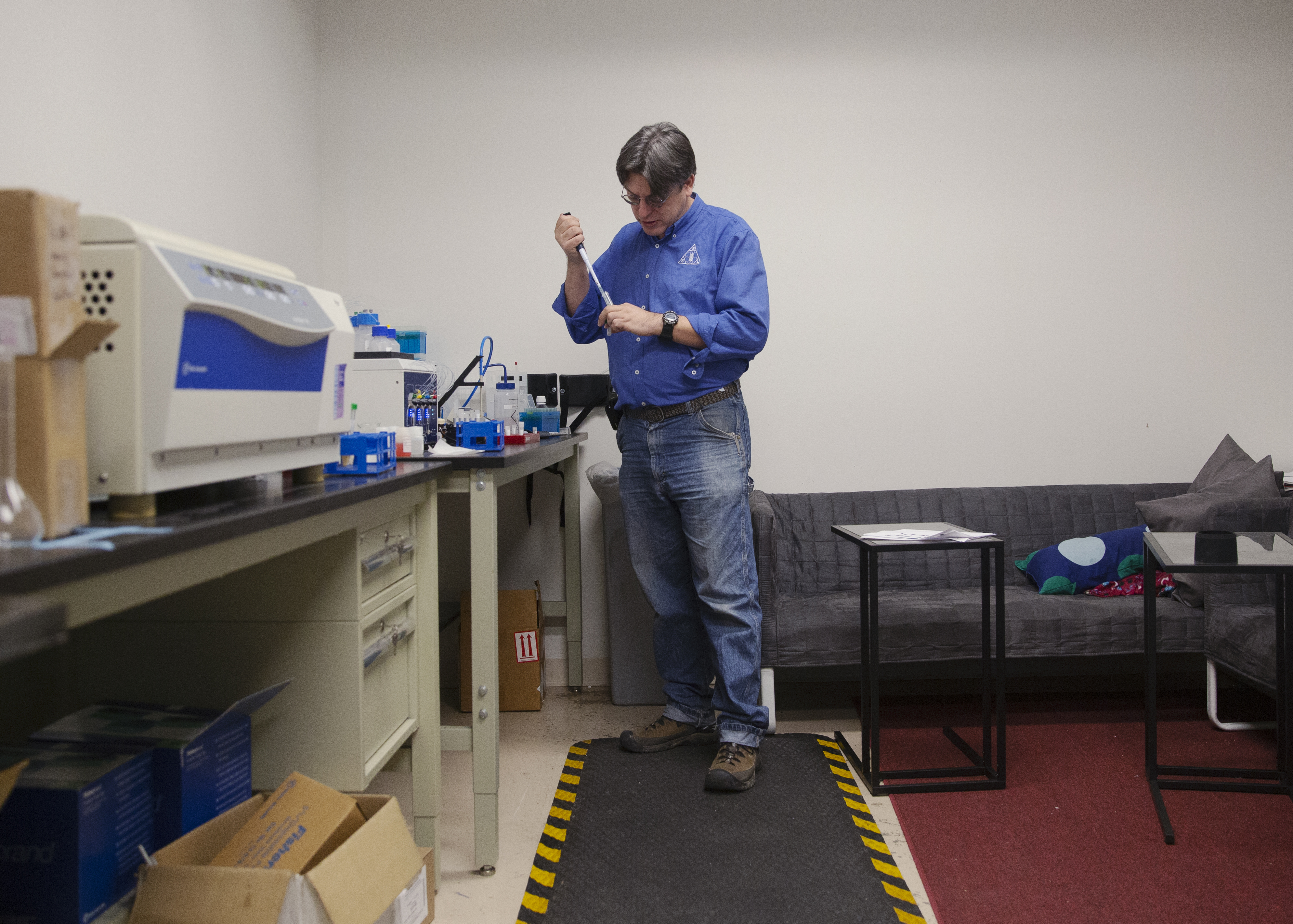
After about an hour, the results were ready.
Gawenis pulled up the Strange honey results on his computer screen— immediately, I saw red all over the analysis page. The results said that the honey was not from Tennessee, it was from Vietnam—a 100 percent match when compared to the database of other honey samples that had been tested from that region. According to Heitzinger's lawsuit, that's what Sweetwater Science's NMR analysis of Strange Farm honey found when they previously asked them to test another sample. The Strange Farm honey also tested positive for the addition of non-honey sugars, though how much, Gawenis can't say for certain.
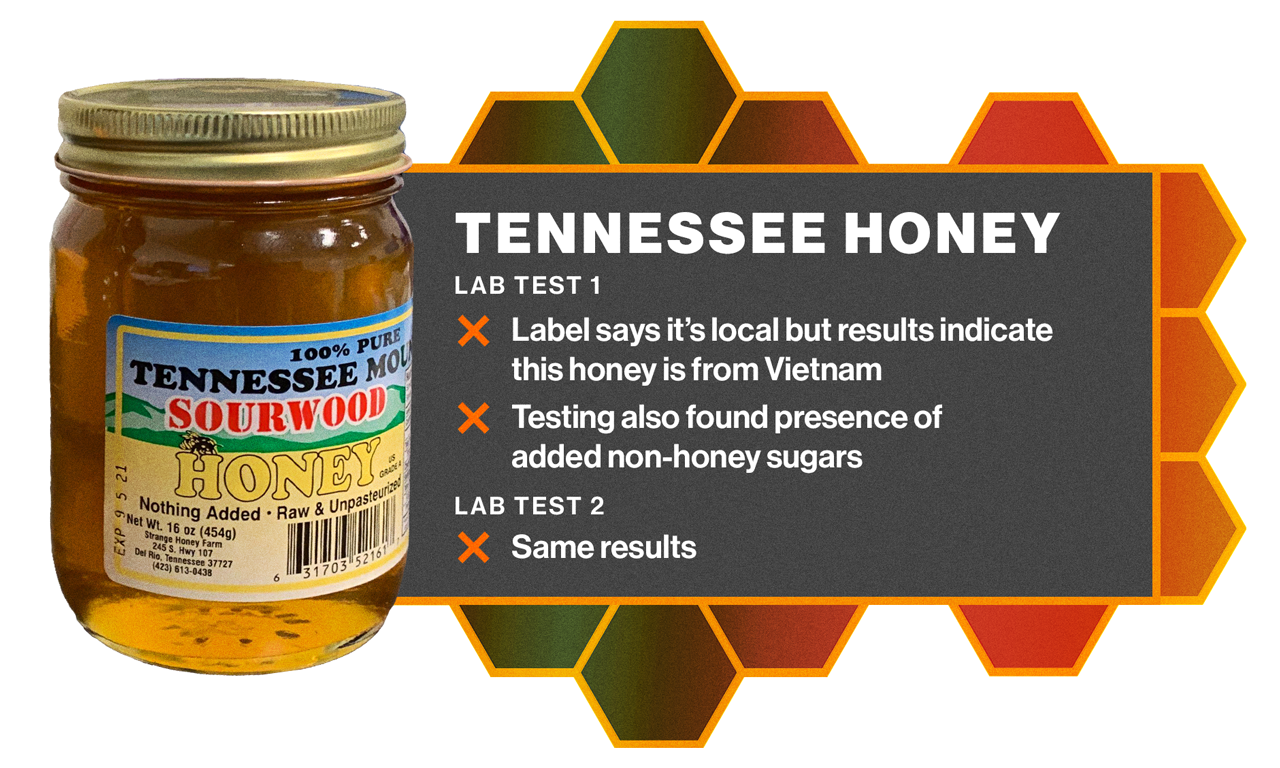
My Whole Foods honey showed high levels of hydroxymethylfurfural, or HMF, indicating it had been heated. When you heat honey, sugars undergo a chemical reaction called the Maillard reaction, which produces HMF at levels that shouldn't occur naturally, given the age of the honey.
Dubecke said that high levels of HMF have been accepted as a marker for heating for a long time. If a honey is harvested in moderate climate conditions, it should have very low HMF levels—if you can detect it at all. According to the Codex Alimentarius, an international collection of food standards, HMF shouldn't be above 40 milligrams per kilogram, or the honey isn't marketable anymore. For tropical climates, the cut off is extended to 80 mg/kg. The enzymes that are found in honey decrease or vanish altogether when they are heated to high temperatures, like 100 degrees or more, Dubecke said.
The label didn't say raw, so, technically, this is not a case of outright fraud. But it's often about what a person thinks they're buying when they select a honey from Whole Foods, Gawenis said. Would I have picked this honey if I knew that it had been heated to the point of killing any naturally occurring enzymes that ostensibly make honey desirable to a consumer?
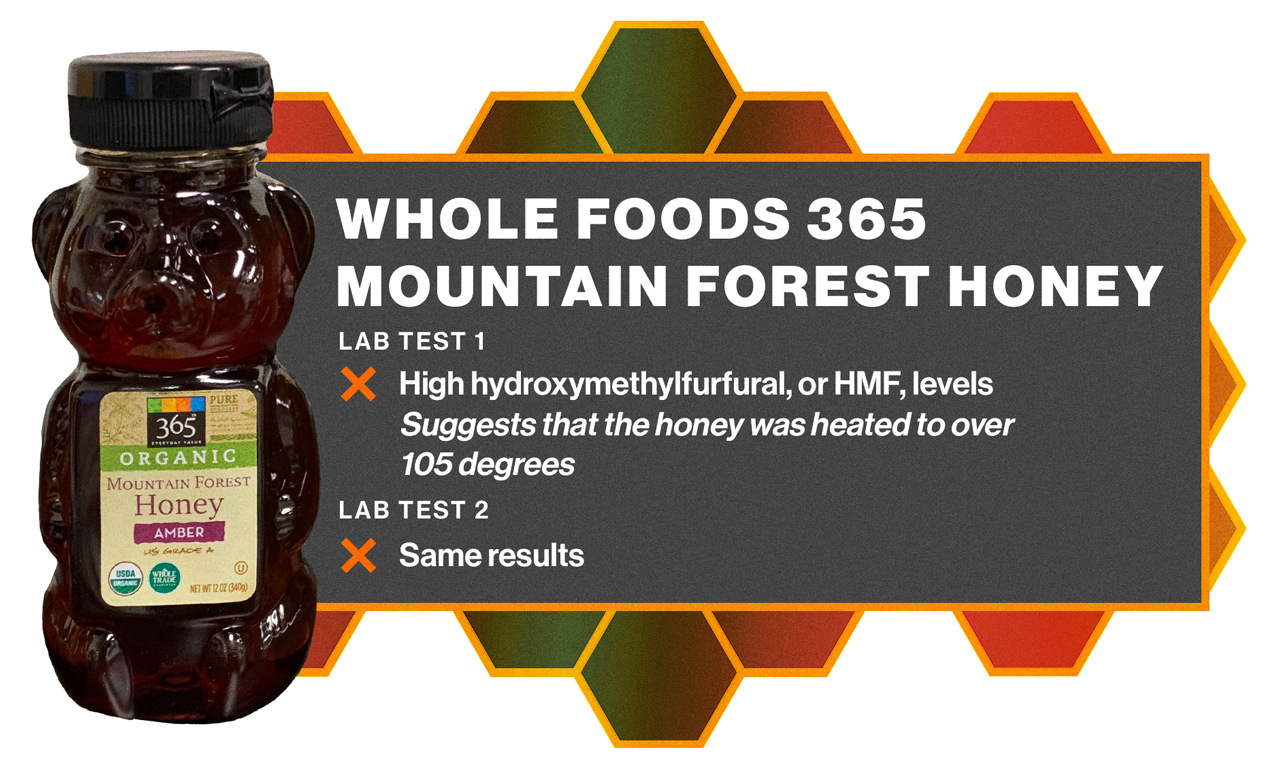
The Busy Bee brand honey that I bought from the small grocery had erratic results—they showed that it had come from five to six different countries, nowhere near each other. Gawenis pored over the results on the computer for awhile longer. He said that it could be this honey had been through resin technology—the resin tech can confuse the NMR, and make its findings garbled. "This is going to keep me up tonight," he declared. "This, I have questions about!"
The only honey that came back with full marks was the Great Value clover honey I bought from Walmart. The label said it was from the US, Canada, and Argentina; the NMR confirmed that, and didn't find any added sugar or evidence of heating.
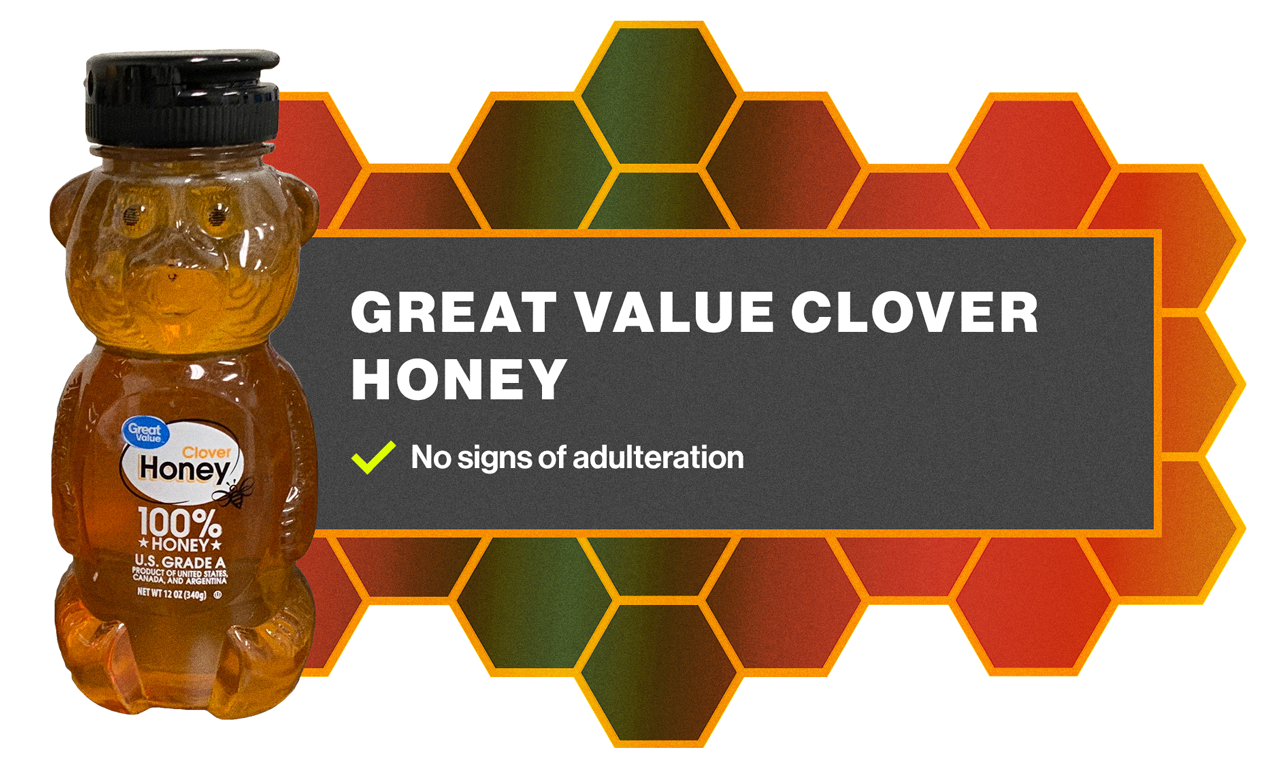
After leaving Missouri with these results, I decided to try and replicate them at QSI in Germany. Though the methods for NMR are the same, I wanted to see if another purchased bottle of the Tennessee honey or Whole Foods would have the same findings, essentially giving them another chance.
I bought the same bottles of honey, packaged them up in bubble wrap, and sent them to Europe. In about a week, Dubecke told me they had my answer: A repeat testing of the Tennessee honey had found adulteration. The NMR picked up on the addition of non-honey sugar syrups and indicated that the sample didn't come from Tennessee, but Vietnam.
"I would say there is almost no honey in it at all," said Jane van der Meulen, the head of QSI's NMR department. "It's basically syrup with a pinch of honey." Van der Meulen also pointed out that there was no proline—an amino acid that should be present in every honey— found in the sample,
"There is no doubt that this honey is adulterated," she said.
In the second bottle I bought of Whole Foods 365 honey, the HMF was also elevated, this time at 162 mg/kg—my first one was 156 mg/kg. Van der Meulen said a high HMF level like this would prompt her to do more investigation. She would want to see if other honeys from the same area had high levels of HMF, or look into how the honey was stored.
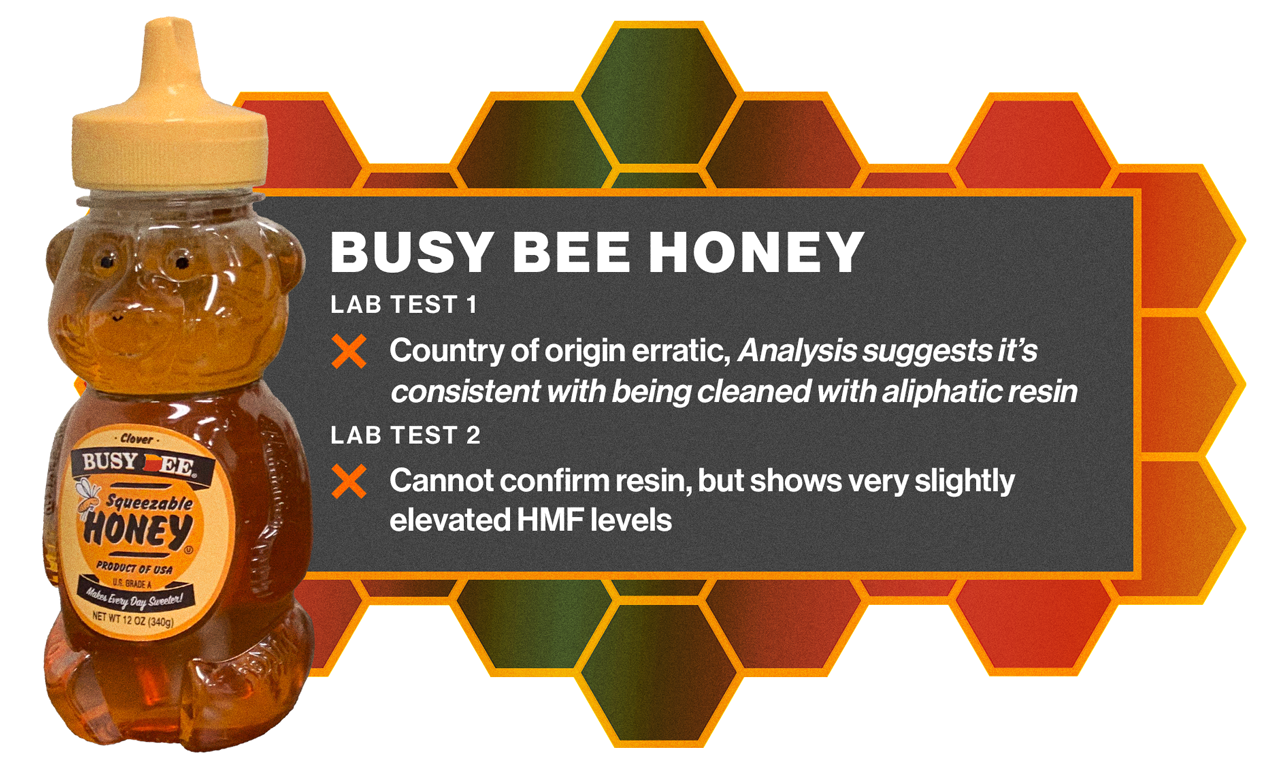
"Generally, we can say a high HMF like that is definitely suspicious and we need to follow up a bit more," Dubecke said. "Even if it comes from a tropical area, it’s pretty high. Those people who will have a honey business, they usually know how to handle honey, so don’t put it into the bright sun for ages, don’t heat it. It’s probably not enough as proof to say this is absolutely, clearly adulterated. But, I would say it’s definitely suspicious."
The second bottle of honey from Wal-Mart had slightly higher HMF levels than the first time, but overall was still pretty good, van der Meulen said. For the Busy Bee honey, van der Meulen told me that she couldn't confirm or deny Gawenis's hunch about resin technology—and that there's currently no good way to tell for sure, even with NMR.
In this way, NMR isn’t a permanent or perfect solution for honey adulteration, and it is slightly open to interpretation. The Busy Bee honey results remain confusing. For more accuracy, we could dig deeper: NMR could be used in combination with other techniques like High Resolution Mass Spectrometry or water analysis, alongside the C4/C3 testing and pollen analysis as backup.
But Gawenis said that no method of testing is likely to stay 100 percent effective forever. NMR could be the best for right now, but adulterators could somehow figure a way around it, like they did with C3/C4 testing. But they'll definitely stay ahead if no one tests at all.
“It's an interesting dance that we have," he said. "Right now, the adulterators are playing lead. Our goal within Sweetwater is that before too long, we lead the dance.”
"Would you be willing to pay another dollar a pound to be certain that your honey is real?”
Whole Foods and Barkman, which packs Busy Bee honey, did not respond for comment about either Sweetwater or QSI’s test results. When I reached out to Strange Farms and their distributor, Hagen, with the second round of results, Hagen told me that Strange was still being advised by his lawyer not to comment. Hagen expressed confusion that the test results would come back this way—not once, but twice. She claims that random testing from the Tennessee Department of Agriculture in May of 2019 did not find added sugar. But when I reached out to the Tennessee Department of Agriculture, they said that in their May 28, 2019 routine food safety inspection, which they do for licensed food manufacturing firms, no samples were collected, and so no adulteration was observed.
Hagen also said she would look into how to keep the honey warehouse cooler in hot temperatures. (A cooler environment wouldn't change the added sugar or origin results.)
"These are not simple times," Hagen said in an email. "There are legal challenges and climate challenges that we have not experience[d] before and have no explanation for. We are not the criminals in this story, we are just attempting to raise bees and sell honey and support our families. Now I have to go stand in the cold to sell honey at a farmers market."
Testing and science only extend so far. Even if a lab comes up with the perfect honey analysis, it won't matter if no one is required to consistently use it, and there's transparency around the honey-making process.
“There has to be a governance in all of this," Roberts told me. "There has to be some sort of legal mechanism that punishes those who cheat.”
As a honey importer, you violate food safety and drug code if you use adulterated products. But if you don’t know that it’s adulterated, do you have an obligation to test? “The answer is no.”
“I have gone to the FDA's offices multiple times for food fraud issues,” Roberts said. “I can tell you based on my own experience that the first question you're asked is: is there a food safety problem? If there is a food safety problem attached to fraud, then they're going to move on it, and they're going to move on it quickly, and they're going to be doing great things. If there isn't, then it's just not a priority. They won't say to you, 'We're not going to do anything about it,' but nothing will get done. And it's frustrating.”
Honey is regulated extensively by many agencies: Advertising of honey is regulated by the Federal Trade Commission; the United States Department of Agriculture created the National Honey Board to expand domestic markets for honey, and runs conservation programs for honey bees; The Environmental Protection Agency regulates pesticide use around honey.
“Much of this regulation, however, is disjointed and lacks a cohesive mission," Roberts said. "For example, the one agency whose mission includes ensuring that honey producers prosper—the USDA—has no jurisdictional reach over enforcing fraudulent honey.”
The USDA has a grading system—A, B, or C—“that lets producers slap Grade A, Grade B, or Grade C on their labels, with zero enforcement,” journalist Larry Olmstead wrote in his book on food fraud Real Food, Fake Food.
Gawenis thinks that the entire honey industry needs a complete overhaul in the way that it’s regulated and tested. “Every step of the process, from the point where the bees bring the nectar back to hive, to the point where the consumer buys it off the shelf,” he said.
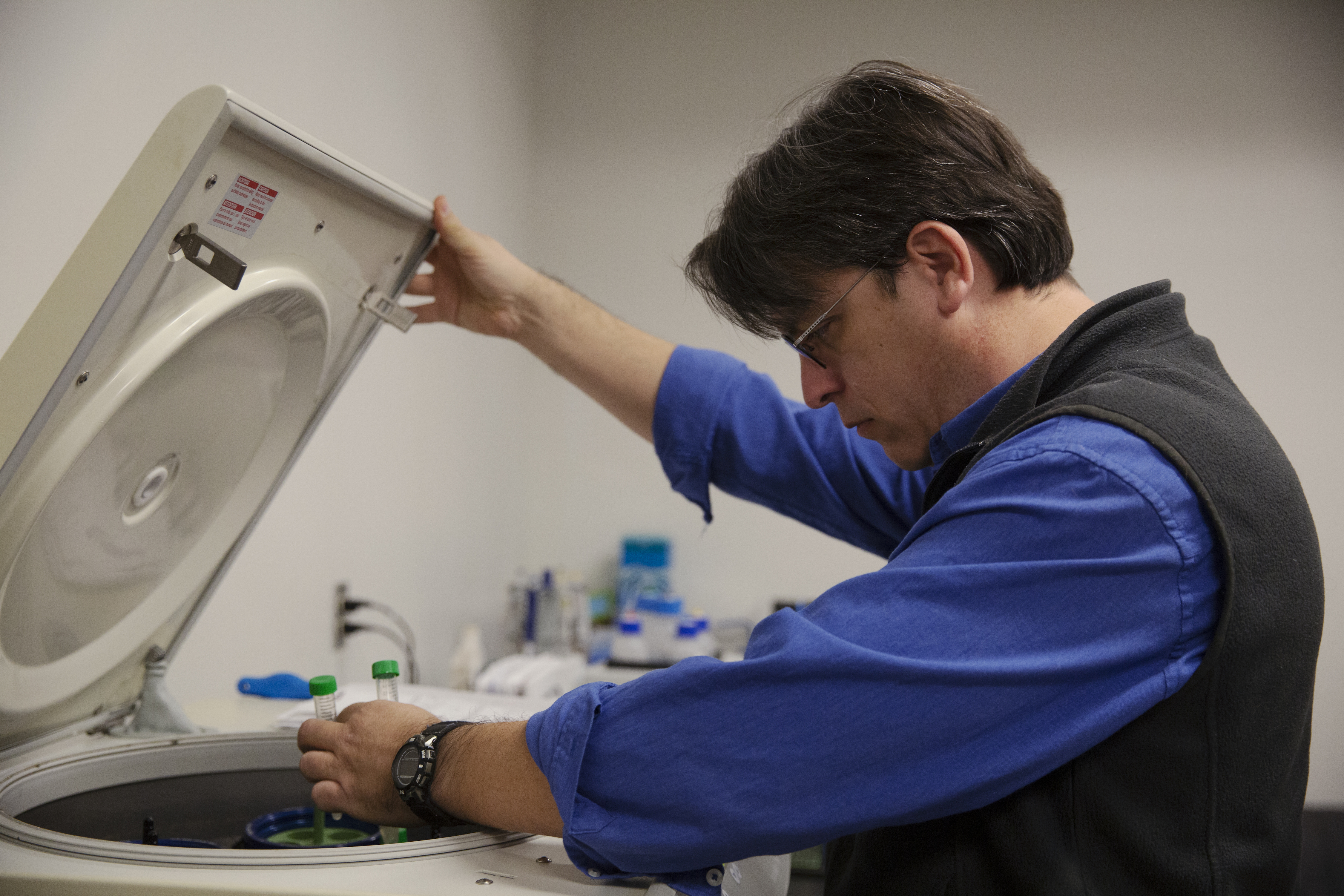
Who's going to drive that overhaul is an outstanding question. One person who wants to step up and do the job is Mitch Weinberg, a former lawyer who started a food fraud investigation company, Inscatech, over a decade ago. Weinberg got involved in food fraud after being extremely sick in China during the melamine crisis. Melamine is a chemical sometimes used to make plates and utensils, and was found in Chinese milk (and many frozen desserts). Milk products had been thinned with water for profit, and the melamine falsely boosted the milk’s protein content so its dilution could escape detection.
Through Inscatech, he was exposed to the world of honey adulteration, met Gawenis and Heitzinger, and now wants to dedicate his time and expertise to create a new honey certification process—but one that actually tests honey, he said.
Weinberg's plan is to conduct unannounced forensics audits, where he’ll show up at the beekeepers to look at the hives, the way the honey is being collected, go through the documentation, and take samples to send to Gawenis for NMR testing. As he does with Inscatech, he'd also have covert operatives on the ground in Asia, South America, or India to make sure that what's happening at factories is on the up and up.
“I'm trying to basically work with beekeepers and honest packers to certify their genuine honey," Weinberg said.
"There has to be some sort of legal mechanism that punishes those who cheat.”
So far, many beekeepers and honey packers have agreed to be Weinberg's first members of what he's calling GenuHoney. But he said that some loyal members of True Source have been resistant to join. Hiatt Honey was True Source Honey's sixth member. “It was a great idea,” Hiatt said. “But I think it’s just lost its way. It’s just a paper trail.” For that reason, Hiatt said he's joined GenuHoney, and he hopes that it gains the kind of reputation that True Source once had.
While GenuHoney would provide a testing mechanism outside of the honey industry to verify authenticity, it would still place the burden on honest beekeepers and packers. Roberts thinks that retailers can step up and play a role. If they refused to buy honey unless it was proven to be tested by NMR, the effects could ripple out throughout the entire global honey market. Heitzinger and his partner aren't done with their lawsuits, either. They hope that as retailers become aware they could actually be held accountable for the honey on their shelves, they might want to do a little more digging as to where their honey is coming from and what's in it.
Finally, Gawenis thinks that if consumers decided to care more too, that combination would be the perfect storm for honey adulteration. “Quite honestly, right now, Americans don’t know what honey is supposed to taste like,” Gawenis said. “You can take out the word honey and put just about any other thing like olive oil, spices, any of those things. The American palette doesn't know what it's supposed to taste like because we've been trained to not want those things. The American palette is based on bland food."
"The nice thing is," he added, "especially with the younger generations coming up, there is a lot more emphasis on looking at what am I eating, and why am I eating it."
Hiatt's father started Hiatt Honey around 50 years ago. “He wanted to give something for his six sons to do, which he sure did,” Hiatt said.
As a commercial beekeeper, Hiatt is nomadic. Eight months of the year, he’s in California; four months are in North Dakota. He has two brothers that are in Washington for most of the year. “You follow the honey and you follow the pollination,” he said.
After pollinating almonds, Hiatt will send 10,000 hives up to Washington to pollinate apples. Then the family all meets up for the summer to make honey. It's a lot of travel, and “Everything has gone up,” Hiatt said. “The price of diesel, the price of trucking, every time we go between a state, it's a quarter of a million dollars because it's $3.50 a mile now to haul bees.”
The honey prices just can't cover it. “You would think honey would be way up, $2.50, $3.00, because in the store you see it $7, $8 a pound," he said. "But it was $2 last year. A lot of people are offering this year, $1.50 to $1.75 and it's approaching the cost of production. I have friends that didn't sell honey that are still holding onto it because they didn't like the price."
When he's seen his own honey at large grocery stores, the color and texture are completely different than what he gathered from his bees. “Our honey is worth way more than what we're getting,” Hiatt said. “The almond growers, the apple growers, the blueberries, carrot, onion, you name it—all these crops depend on pollination. The beekeepers are just trying to stay alive. I lost half my hives last winter. I'm trying to rebuild, and here I'm getting a crappy price for honey.”
Sign up for our newsletter to get the best of VICE delivered to your inbox daily.
Follow Shayla Love on Twitter.
from VICE https://ift.tt/2IrxILm
via cheap web hosting
No comments:
Post a Comment